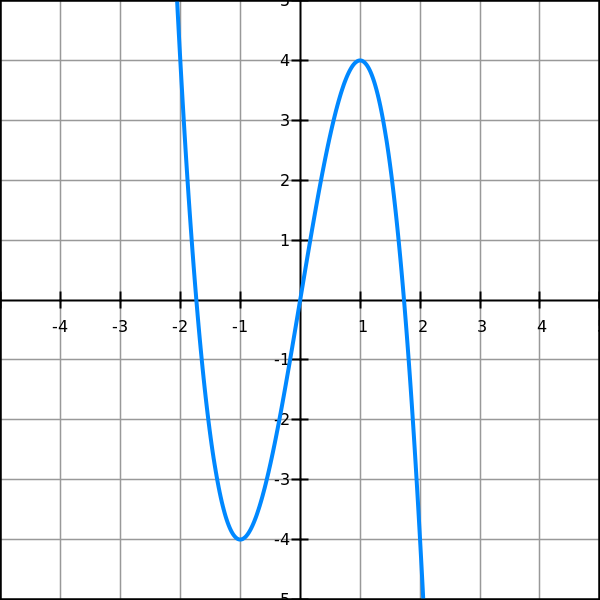Notes to a video lecture on http://www.unizor.com
Derivatives - Problems 1
Problem 1.1
Consider a sufficiently smooth function f(x).
Is condition f I(x0) = 0
(a) necessary,
(b) sufficient or
(c) necessary and sufficient
for f(x0) to have a local extremum (local maximum or local minimum) at point x=x0?
Prove your answer.
Answer
(a) necessary
It is not sufficient because it might be an inflection point, like for f(x)=x3 at x=0.
Problem 1.2
Consider a sufficiently smooth function f(x).
Is condition f II(x0) = 0
(a) necessary,
(b) sufficient or
(c) necessary and sufficient
for f(x0) to have an inflection point at x=x0?
Prove your answer.
Answer
(a) necessary
It is not sufficient because it might be a point of local extremum, like for f(x)=x4 at x=0.
Problem 1.3 - Derivative of the inverse function theorem
Consider a sufficiently smooth function y=f(x) with derivative
Prove that its inverse y=g(x) (that is, f(g(x))=x) has a derivative
g I(x) = 1 / f I(g(x))
Example 1
y = f(x) = xn
y = g(x) = x1/n (inverse)
f I(x) = n·xn−1
g I(x) = (1/n)·x(1/n)−1 =
= (1/n)·x(1−n)/n
1 / f I(g(x)) = 1 / {n·[x1/n]n−1} =
= (1/n)·1/x(n−1)/n =
= (1/n)·x(1−n)/n = g I(x)
Example 2
y = f(x) = ex
y = g(x) = ln(x) (inverse)
f I(x) = ex
g I(x) = 1/x
1 / f I(g(x)) =
= 1 / e ln(x) = 1/x = g I(x)
Problem 1.4
Consider all possible regular square prisms with a given surface area.
Under what condition between the length of a base' side a and altitude h the volume of this prism will be minimum or maximum?
Solution
Volume V=a²h
Surface area S=2a²+4ah
Since S is given,
h=(S−2a²)/4a
Substitute it into an expression for volume:
V(a) = a²·(S−2a²)/4a =
= (1/4)·a·(S−2a²)
So, we have to find extremum(s) of function
V(a) = (1/4)·a·(S−2a²) =
= (1/4)·(−2a³+S·a)
This is a polynomial function of a, defined on an interval from 0 to a maximum value when the volume is still greater or equal to zero, that is satisfying the condition S−2a² ≥ 0.
Here is how this function looks on a graph (we have chosen S=6 in this case, so we have to consider this function only on an interval [0,√3]):

As seen from the graph, the extremum of our function within the specified domain is a local maximum.
To find its extremum(s), find the stationary points where derivative equals to zero:
dV/dx = (1/4)·(−6a²+S)
To make sure, we are dealing with a local maximum, we can take a second derivative, it's equal to −3a, and it is negative within a domain of our function, which confirms that a stationary point is a local maximum.
Set the first derivative to 0, getting an equation for variable a:
−6a²+S = 0
Its only root within the established domain is a = √S/6.
Now we can find the corresponding value of altitude h in terms of surface area S:
h = (S−2a²)/4a =
= [S−(S/3)]/(4√S/6) = √S/6.
As we see, h=a, which means that the maximum volume is reached when our prism is a cube.


No comments:
Post a Comment